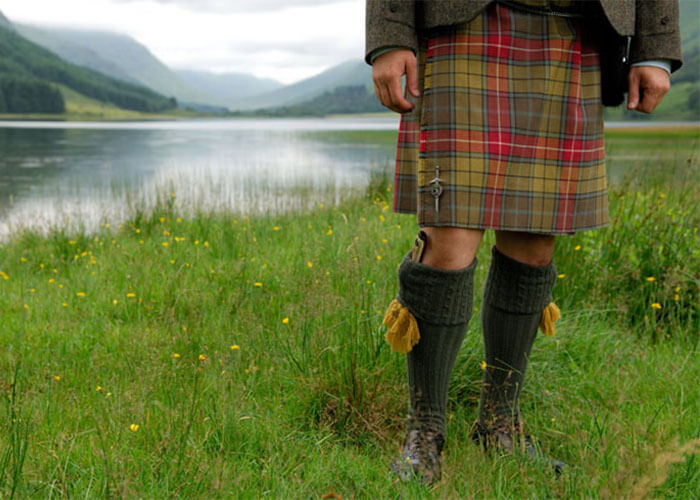Kilts are a traditional Scottish garment that has captured the hearts of people around the world with their unique style and history. Have you ever asked yourself, “Where does the kilt originate from?” This article will take you on an adventure to discover the origins and history of this famous piece of clothing. We’ll explore the history of the kilt, from its origins in ancient Scotland up to the present day.
What is the origin of Kilts?
Kilts are derived from the Scottish Highlands where they were developed as practical, functional clothing for rough terrains and extreme weather. In its earliest forms, the “belted-plaid” was simply a long piece of cloth worn on the shoulders and secured with a waist belt. The versatile garment provided protection against the weather while allowing freedom of movement.
The belted plaid evolved over time into what we know today as the modern kilt. As time passed, the kilt evolved into a more tailored garment. Pleats were added to the back of the kilt and the front apron was fixed. The new style was both comfortable and stylish, and became a symbol of Scottish heritage.

Kilts: A History of the Kilt
Feileadh Mor
It was a precursor of the kilt. The Highland clans wore it in the 16th century and the 17th century. It consisted of an oversize piece of cloth that was draped on the body. The wearer could adjust the length of this garment and fold it in various ways, allowing them to be flexible.
Philabeg
A Gaelic term meaning “little Kilt”, the philabeg marked an important transition in the evolution. The philabeg was introduced in the 17th century as a small version of the traditional feileadh mor. It was made of tartan and pleated in the back.
Modern Kilt
The modern kilt took shape in the 18th century. Small kilts, also known as “walking Kilts,” featured pleated backs and fixed front aprons. The new design allowed easier movement, while still maintaining a polished and neat appearance.
Questions and Answers on the Origins of the Kilt
What can I learn about the history and development of the kilts?
You can find a detailed history of the Scottish kilt in reputable resources such as academic journals and websites that are dedicated to Scottish culture. The National Museum of Scotland is a great resource for information about the kilt.
Do you know if all Scotsmen wore kilts before?
Kilts are primarily worn in Scotland by Highland clans. Lowland Scots wore different types of clothing.
Was the wearing of kilts ever banned in history?
The Act of Proscription, passed in 1746 after the Jacobite Rebellion, banned wearing kilts or other Highland traditional clothing. In 1782 the ban on wearing a kilt was lifted, which allowed it to gain popularity.
What other countries have adopted the Scottish kilt?
Kilts have had an impact on the fashion industry worldwide. They inspire designers as well as enthusiasts. The kilt’s distinctive style and significance in culture have inspired designers to incorporate it into a variety of contemporary designs such as dresses, skirts and menswear. Tartan, which is closely related to the kilt pattern, has been incorporated into many fashion collections around the world.
What are the different tartan patterns available?
There are many tartan designs, and each one represents a particular Scottish family or clan. The patterns are made by combining different colors of thread to create a unique design. The color combination, the size of the check, and the overall design can all vary, giving each pattern a unique look and feel.
Is a kilt only for people of Scottish descent?
The kilt is a cultural symbol for many Scots, but it’s also a way for people around the globe to show their pride in Scottish heritage. Wearing a kilt is a great way for anyone, no matter what their background, to embrace and celebrate the rich traditions and history associated with Scotland.
The conclusion of the article is:
Kilts have a rich and long history dating back to centuries. This iconic Scottish garment evolved from its humble origins as a belted plaid into the modern kilt. It has become a symbol of Scottish culture. The influence of the kilt can be felt not just in its fashion, but in those hearts that appreciate it. Remember its origins and journey the next time you come across a kilt.




